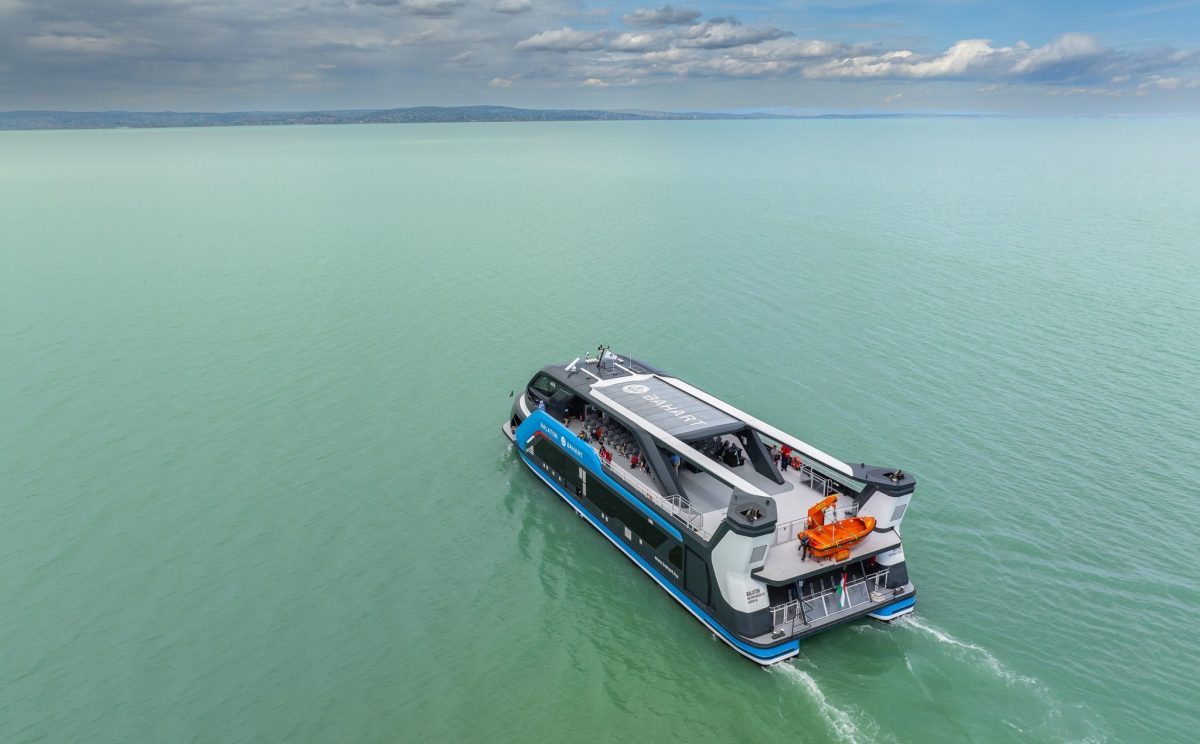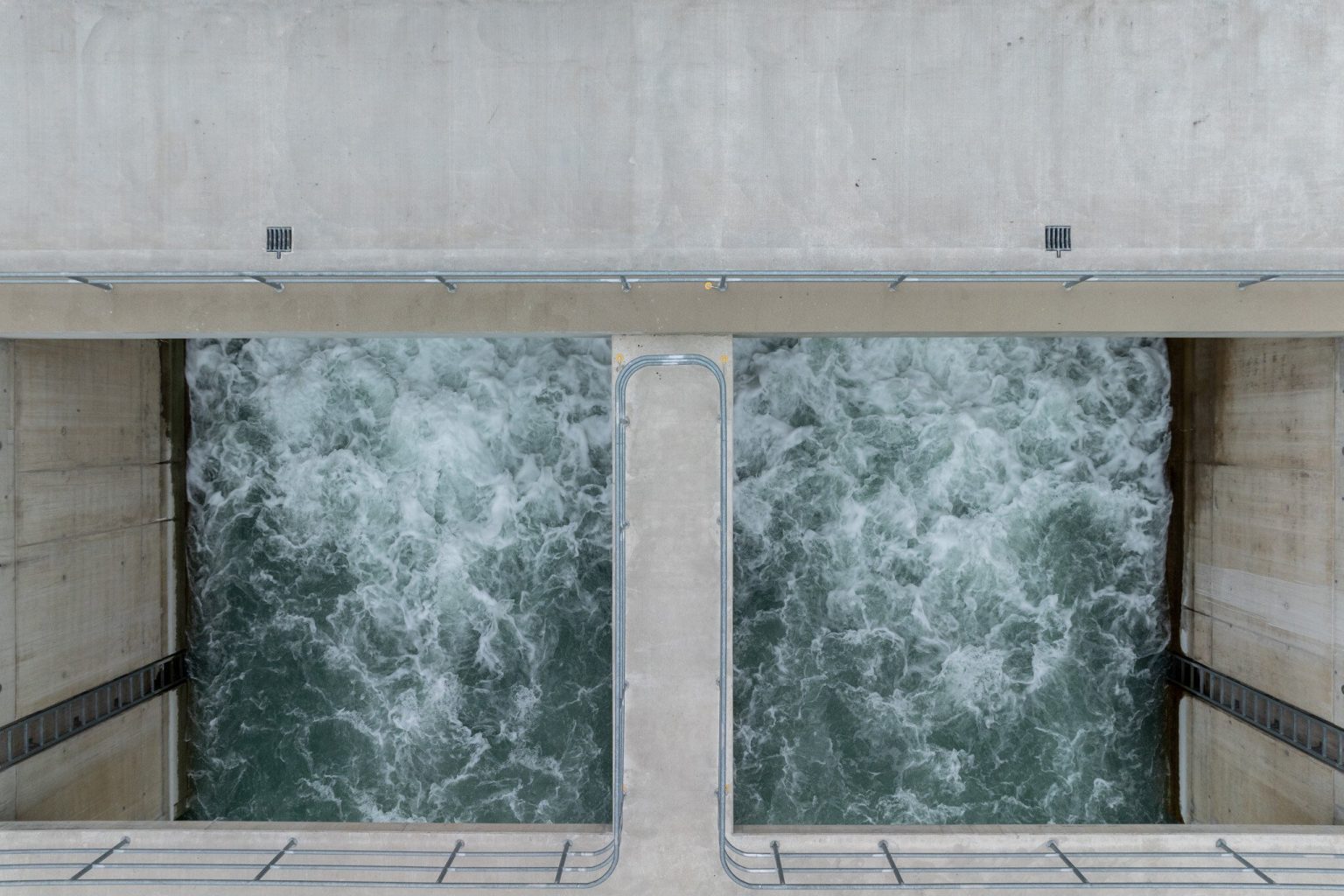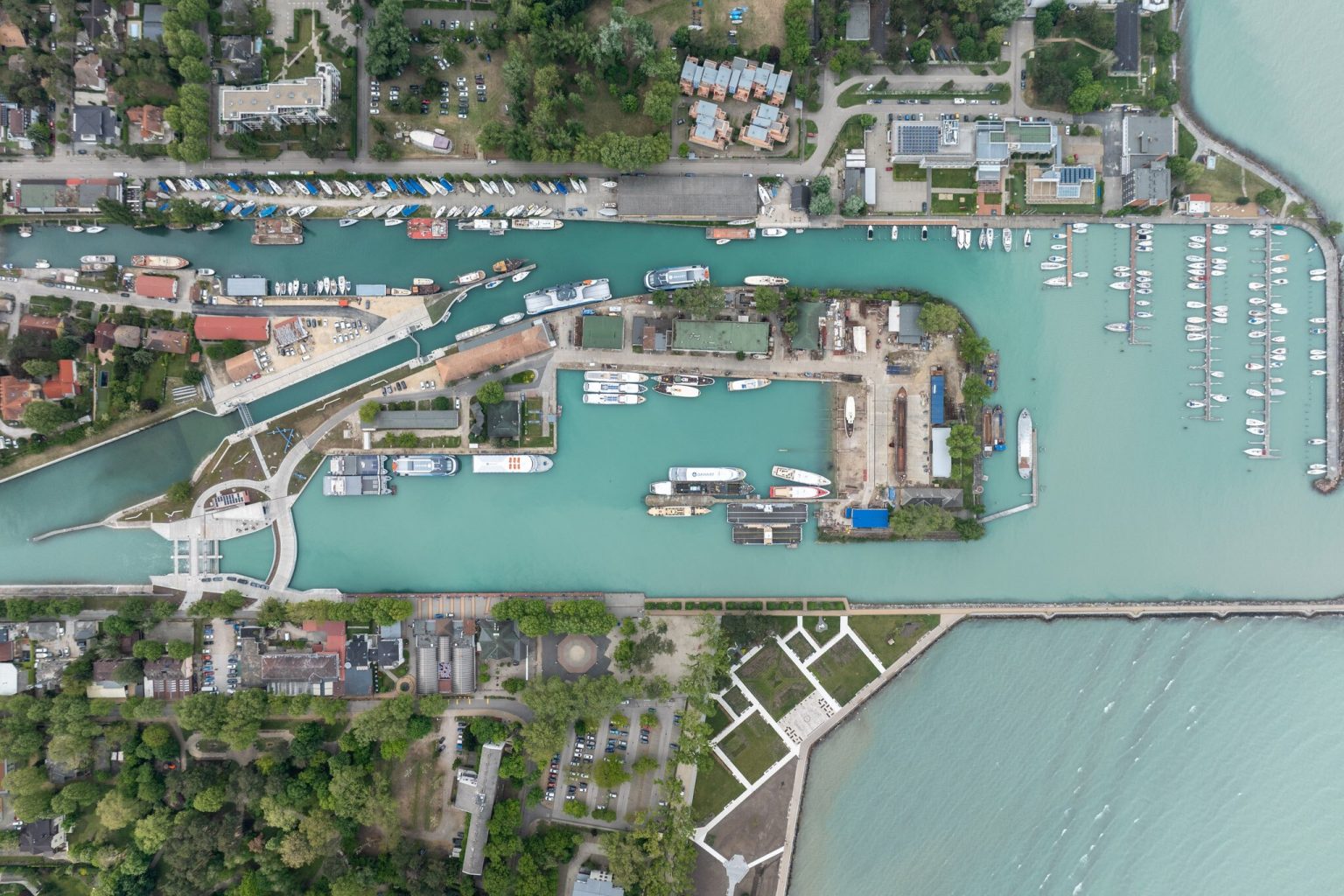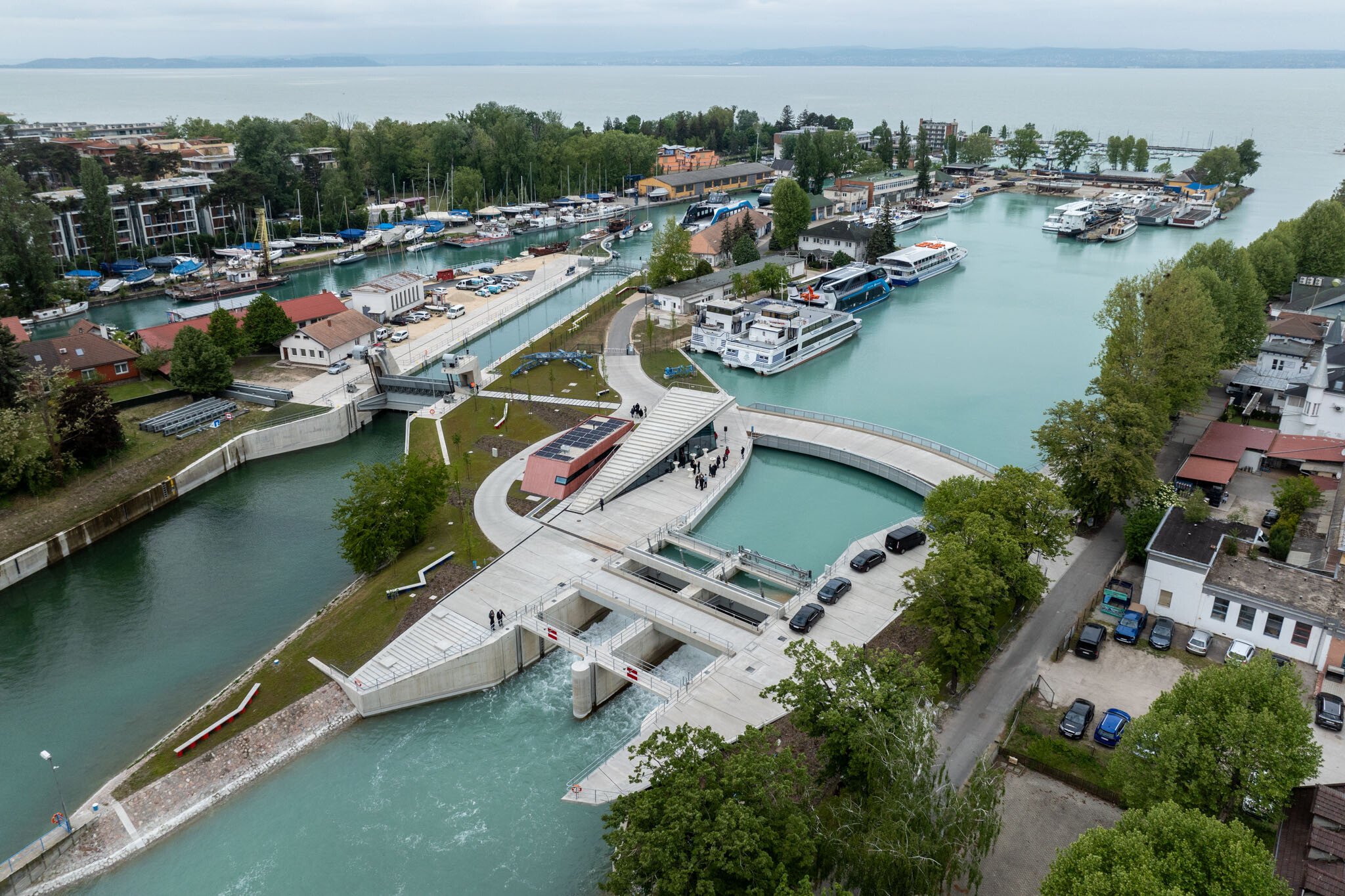
Thanks to the fleet expansion, ships will be able to sail more frequently between the coasts.Continue reading
The project to modernize the Lake Balaton water drainage system, jointly financed by the European Union and the Hungarian government, was completed at the end of 2023,wa and cost almost HUF 20 billion (EUR 51 million). The system meets all requirements and is unique both in Hungary and internationally, István Csonki, Director of the Central Transdanubian Water Directorate (KDTVIZIG), told Sonline.
The investment has already proven its worth over the past six months and thanks to it, the vacation season at Lake Balaton can begin with a perfect water level of 120 centimeters.
The aim of the development is to adapt to the requirements of climate change and to make the management of the lake’s water resources much more flexible.
Until 1999, Lake Balaton was spared truly extreme weather conditions. It then experienced four years of severe water shortages between 2000 and 2003, resulting in extremely low water levels, and then the opposite in 2014. The above-average rainfall in 2013-2014, caused the water level to rise, which, combined with strong wind-driven tides and a longitudinal expansion of the lake, led to damaging flooding, particularly on the southern shore. This has impeded the operation of stormwater drainage networks, permanently flooded properties and coastal walkways, and damaged beaches.

The Sió-Channel. Photo via Facebook/Magyarország Kormánya
Due to the low capacity sluice installed in 1947, and the condition of the Sió-Channel, the problem could not be effectively addressed.
The frequency of extreme weather conditions required the creation of a water reservoir for the lake,
explained István Csonki.
Since there is no artificially constructed facility to replenish Lake Balaton’s water supply, the summer water level can be planned by operating water level control facilities built near Siófok (southern shore). It is necessary to maximize the use of storage capacity, i.e. to keep the high spring water levels within the legal limits and to constantly monitor the weather forecasts.

Photo via Facebook/Magyarország Kormánya
The over 70-year-old large works in Siófok, regulating the water level of Lake Balaton, had already reached the end of their service life in the early 2000s, and would no longer have been technically safe if they had been renovated. Therefore, new ones had to be built.
The two main components of the project were the construction of a lock that allows new water level control and navigation on Lake Balaton, and the reconstruction of the Sió-Channel.
The Balatonkiliti embankment dam (southern part of Siófok) is involved in the water draining and the transfer of boats, ensuring the ecological water demand. It is also aesthetically pleasing, with a two-kilometer stretch of water-filled canal in the Siófok area.

Photo via Facebook/Magyarország Kormánya
The renovated Sió-Channel can now handle and safely transport the excess water from Lake Balaton and can be safely navigated during the water release period. Furthermore, a low-lying wetland was created in Tolnanémedi in the area adjacent to the Sió-Channel, which is mostly at risk of flooding. At the mouth of the Kapos River, a lock system was constructed over an area of almost 100 hectares and a 12-hectare lake with a capacity of 110,000 cubic meters was created.
The investment has proved its worth several times over in recent months,
stressed Csonki. The new ships of the Balaton Shipping Company (BAHART) successfully launched on Lake Balaton in the summer of 2023, and the water level of the lake that has risen significantly due to heavy rainfall in the fall-winter of 2023-24, was lowered by the newly built lock.
Via Sonline; Featured image via Facebook/Magyar Turisztikai Ügynökség